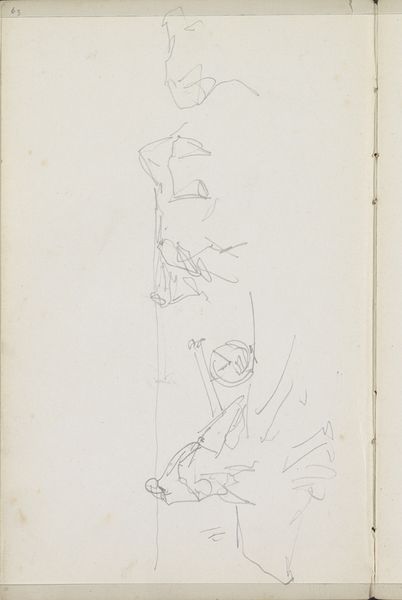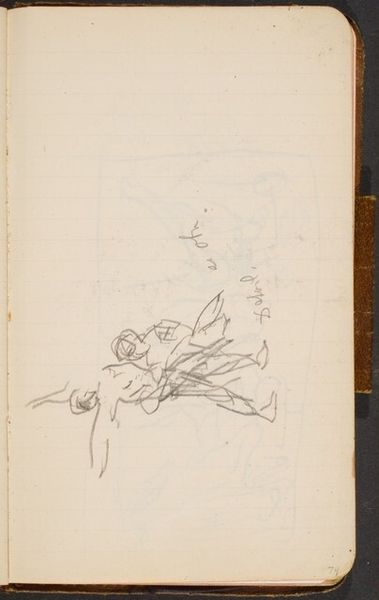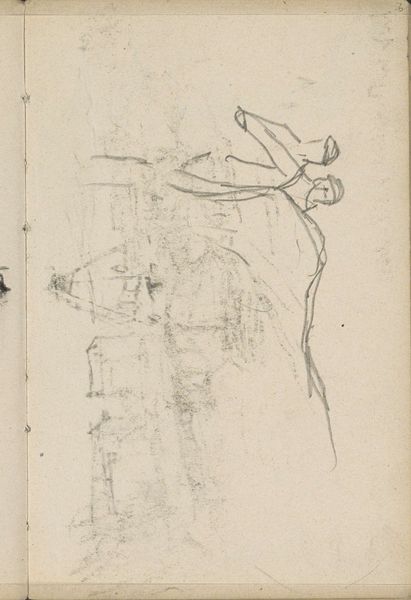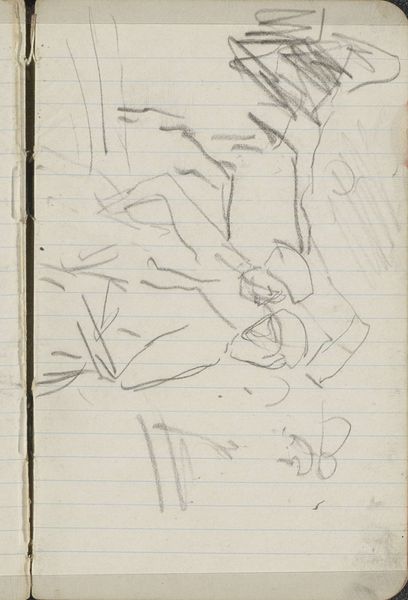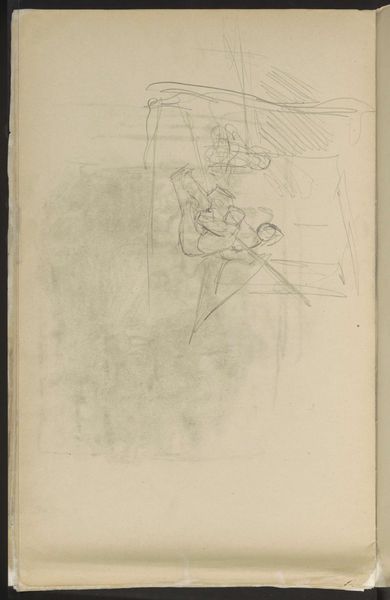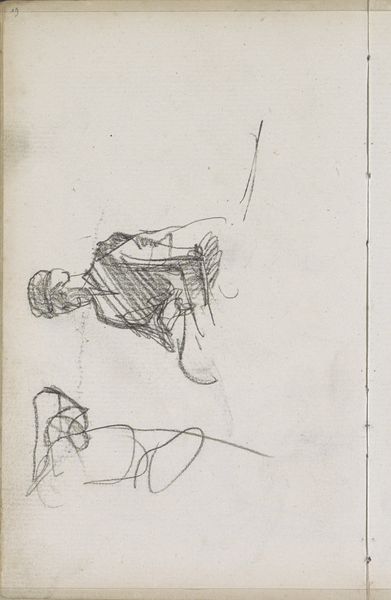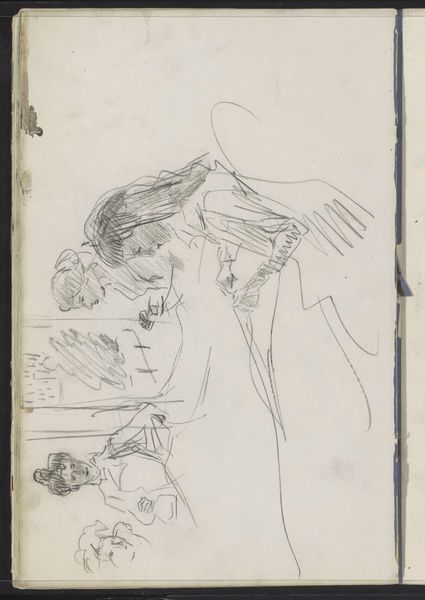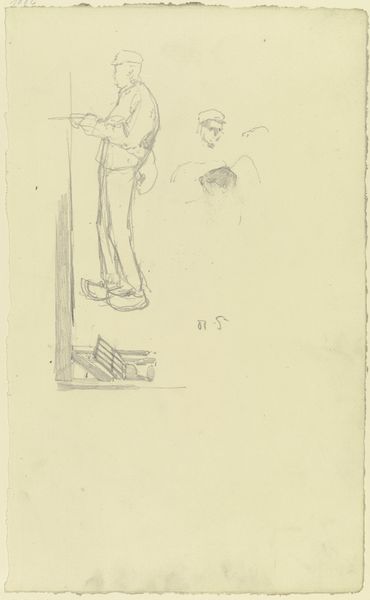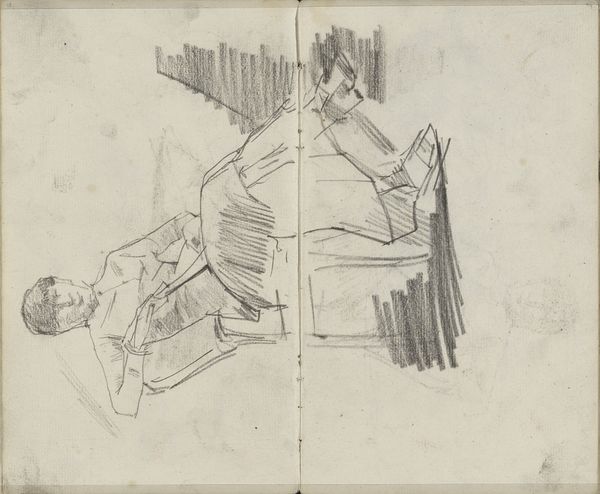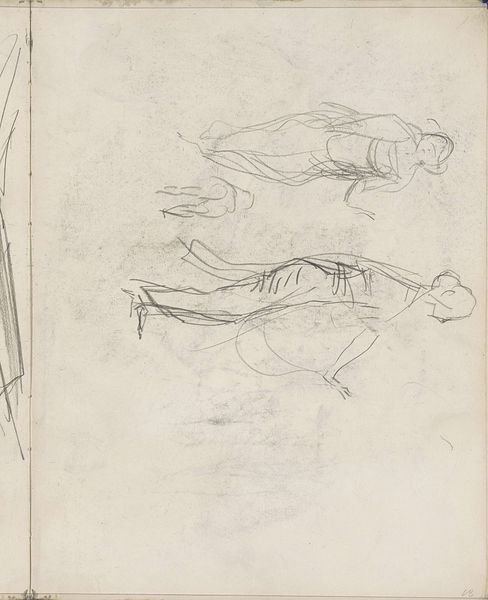
drawing, pencil
#
portrait
#
drawing
#
pen sketch
#
figuration
#
personal sketchbook
#
idea generation sketch
#
sketchwork
#
ink drawing experimentation
#
pen-ink sketch
#
pencil
#
sketchbook drawing
#
storyboard and sketchbook work
#
nude
#
sketchbook art
#
initial sketch
Copyright: Rijks Museum: Open Domain
Editor: This is Isaac Israels' "Seated Female Nude," a drawing made sometime between 1875 and 1934. The quick pencil strokes give it such an ephemeral feel. What can you tell me about it? Curator: Look closely at the medium – pencil on paper. What does that choice of material communicate to you about its creation and intended use? It feels immediate, doesn’t it? Likely from a sketchbook, perhaps for future development into something else, but also possessing its own intrinsic worth. Consider the economics of readily available drawing materials in the late 19th and early 20th centuries. Who had access to art training and paper, and what social narratives were deemed worthy of representation at the time? Editor: So, the materials suggest a specific socio-economic context influencing the artist's choices and the subjects they chose to depict? Curator: Precisely. And also how the subject herself is rendered. The hasty line work, suggestive of process over polish. Israels' mark making feels almost… functional, revealing something about the labour inherent in image making itself, and even perhaps an intimacy between the artist and model. Can a study be seen as its own, finished product? It challenges notions of high and low art. Editor: That makes me think about the function of sketching in relation to finished paintings or sculptures and how our perception of ‘value’ is constructed around traditional categories. Curator: Exactly! The concept of "finish" and its association with value. What stories can we extract when we view the means of production itself, the traces of work itself? Editor: Thinking about the art world in terms of material access really does shift your perspective. It changes how you interpret the image. Curator: Indeed, we’ve looked past aesthetic judgement, and instead interrogated Israels’ practice by assessing materials, labour, and how the economics of art creation influences the final representation of the body itself.
Comments
No comments
Be the first to comment and join the conversation on the ultimate creative platform.
